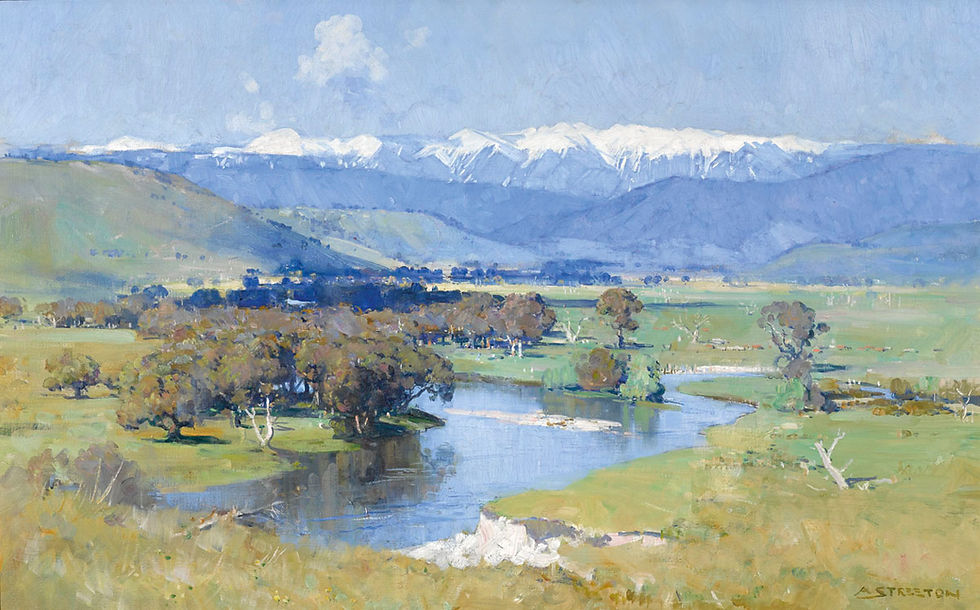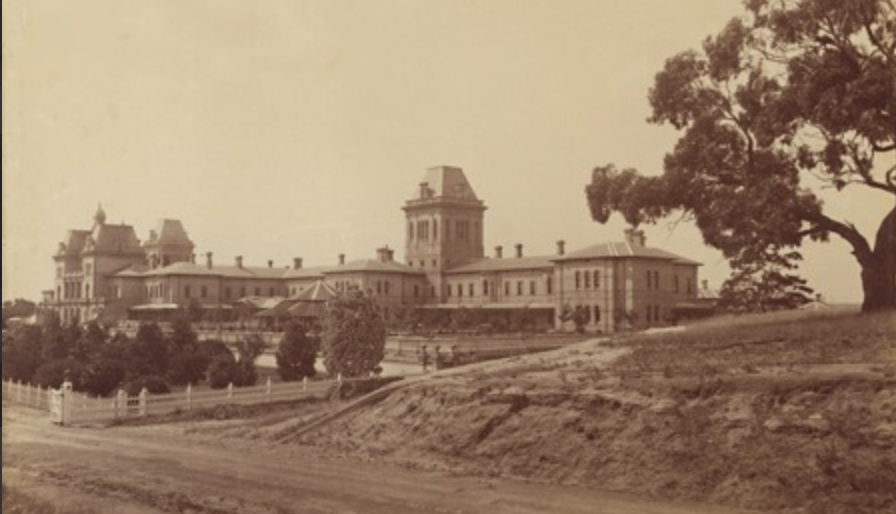‘Where beauty lies’: Salvaging the ‘aesthetic experience’ in contemporary landscape painting
- Andrew McIlroy
- Jul 8, 2023
- 4 min read
Updated: Oct 22, 2023

It is far from unusual for artists to struggle with their work. Too often the soul-destroying fear of failure is easily dismissed by those less familiar with the unforgiving nature of the artistic process. There can be fewer life choices so full of disappointment than those of the artist. But we can admire their persistence, should that be of some comfort. But amongst them all, one must surely pity the landscape painter.
Landscape painters have over many years suffered indignation in a world, buttressed by modish trends and changing philosophical views on what is appropriate and what is not when dealing with nature. The quest for recognition has too often led many to create unnecessarily complex landscape paintings, layered with idiom and cultural messaging instead of eliciting a truly aesthetic experience of the natural world.
Within our societies, there has been a long debate concerning the appreciation of nature. The debate centres on questions concerning what is it to have an ‘aesthetic experience’ (or appreciation of nature), and what if this experience is not of the right sort, say one that accelerates climate change or aides deliberately or otherwise in the destruction of our natural environment?

Arthur Streeton, 'The Murray and the Mountain' (1930) Image: Smith & Singer

Lloyd Rees, 'Evening Landscape, Gerringong' (1944) Image: Art Gallery of NSW
Perhaps germane to this, is the question: Given that we can tell if we are having an aesthetic experience (and not some other kind), are there ways of determining whether some aesthetic experiences are better than others? Are aesthetic experiences of nature less impactful and as a consequence less valuable than say a religious, scientific, economic, cultural or artistic experiences of nature?
If the answer here is ‘Yes’, does it follow that the aesthetic experience arising from landscape painting is less valuable than other forms of artistic expression. As there are many ways of experiencing nature, do such distinctions make sense anyway? Does it make sense for example to say to someone, “This is the way you must experience nature"?
These questions have been answered over and over again through the years, but the debate continues as more and more landscape paintings appear on our gallery walls that dictate how the audience must see the work, more often than not unnecessarily overlaid with pathos or moral grandstanding. Often it is unclear whether this truly adds anything of value.
There is a bright side. In the hurly-burly of the contemporary art world, it may just be possible to reclaim the dominance of landscape painting through a re-evaluation of the role of aesthetic experience in contemporary art, asserting the primacy and honouring the legacies of some of Australia’s most important landscape painters such as Arthur Streeton, Lloyd Rees, Albert Namatjira, Arthur Boyd, John Olsen, Hans Heysen, Clarice Becket, Amanda Penrose Hart and Philip Wolfhagen, just to name a few.

Albert Namatjira, 'Central Australian Landscape' (1953) Image: Deutscher & Hackett

Hans Heysen, ' Droving into the light' (1921) Image: Art Gallery of Western Australia
And this may be how we re-evaluate the depiction of landscape in art.
Academics in the main argue from two sides of the debate on aesthetic experience in art. On the one hand, aesthetic appreciation must be directed at nature, directed by knowledge about it – an understanding of ecology, environmental systems and their interactions. In essence, this approach to aesthetic experience consists of the scrutiny of an object and a response based upon it, enriched by scientific understanding; without that one cannot be certain that one’s response is to nature and not to something else. (Allen Carlson, 1990)
Others believe that this approach is over-intellectualised, failing to give an adequate role to emotion, to mystery, to engagement, and leaves out a meditative response that is important in our experiences of nature. Importantly, Carlson's cognitive approach fails to account for the significance of the experience of imagination – how fiction plays an enormous role in shaping the way a culture perceives and conceives the environment. (Marcia Eaton, 1998)
Myths and legends argues Eaton have shaped attitudes and beliefs about nature, and by implication, about life in general. Nature is an important source of revelation.

Arthur Boyd, 'Berwick Landscape' (1948) Image: QACOMA

Philip Wolfhagen, 'An Altarpiece for the Summer Solstice' (2023) Image: Philip Bacon
Certainly, insisting on a scientific basis for the appreciation of nature "may take some of the fun out of it, but it is a good price to pay". It cannot be detrimental to aesthetic experience, but rather increases it.
In learning what to look for, we achieve the very possibility of seeing – essential to an aesthetic experience. Seeing something is more likely if we look for it, and we look for it only when we know where and what to look for. In this, the detail - the hidden mystery - of a landscape will reveal itself to us.
Of course, it is not so black and white. Human valuing is holistic; we rarely experience something purely aesthetically, or purely ethically, or purely religiously, or purely scientifically. In the same vein, it is unlikely that a little knowledge - or flight of imagination - will get in the way of aesthetic experiences, but it would be worthwhile for artists and those that criticise the depiction of landscape as an artistic appreciation of nature to remember this. After all, that is where the beauty lies.

Clarice Beckett, 'Beaumaris Seascape' (c1925)

Amanda Penrose Hart, 'Autumn' (2022) Image: The Artist
Main Image: John Olsen, 'Golden Summer, Clarendon' (1983)
Andrew McIlroy is an artist and writer, living and working in Melbourne, Australia



Comments